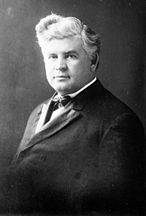United States House election, 1932
|
|
|||||||||||||||||||||||||||||||||||||||||||||||
|---|---|---|---|---|---|---|---|---|---|---|---|---|---|---|---|---|---|---|---|---|---|---|---|---|---|---|---|---|---|---|---|---|---|---|---|---|---|---|---|---|---|---|---|---|---|---|---|
|
|||||||||||||||||||||||||||||||||||||||||||||||
|
All 435 seats to the United States House of Representatives 218 seats needed for a majority |
|||||||||||||||||||||||||||||||||||||||||||||||
|
|||||||||||||||||||||||||||||||||||||||||||||||
|
|||||||||||||||||||||||||||||||||||||||||||||||
The 1932 United States House of Representatives elections was an election for the United States House of Representatives in 1932 which coincided with the landslide election of President Franklin Delano Roosevelt.
The inability of Herbert Hoover to cope with the Great Depression was the main issue surrounding this election. The overwhelming unpopularity of Hoover caused his Republican Party to lose over 100 seats to Roosevelt's Democratic Party and the small Farmer-Labor Party. The Democrats retained the majority they had gained through special elections in the last Congress, and expanded it to a commanding level. This round of elections was seen as a referendum on the once popular Republican business practices, which were eschewed for new, more liberal Democratic ideas. This was the first time since 1894 that a party suffered triple-digit losses (in this case the Republicans), and the Democrats posted their largest net seat pick-up in history, before or since the election.
Since no reapportionment (and in nearly all states no redistricting) occurred after the 1920 census, the district boundary changes from the previous election are quite substantial, representing twenty years of population movement from small towns to the more Democratic cities.
Source: Election Statistics - Office of the Clerk
Two special elections were held apart from those in November. The elected winner would serve only the remainder of the incumbent Congress.
...
Wikipedia


